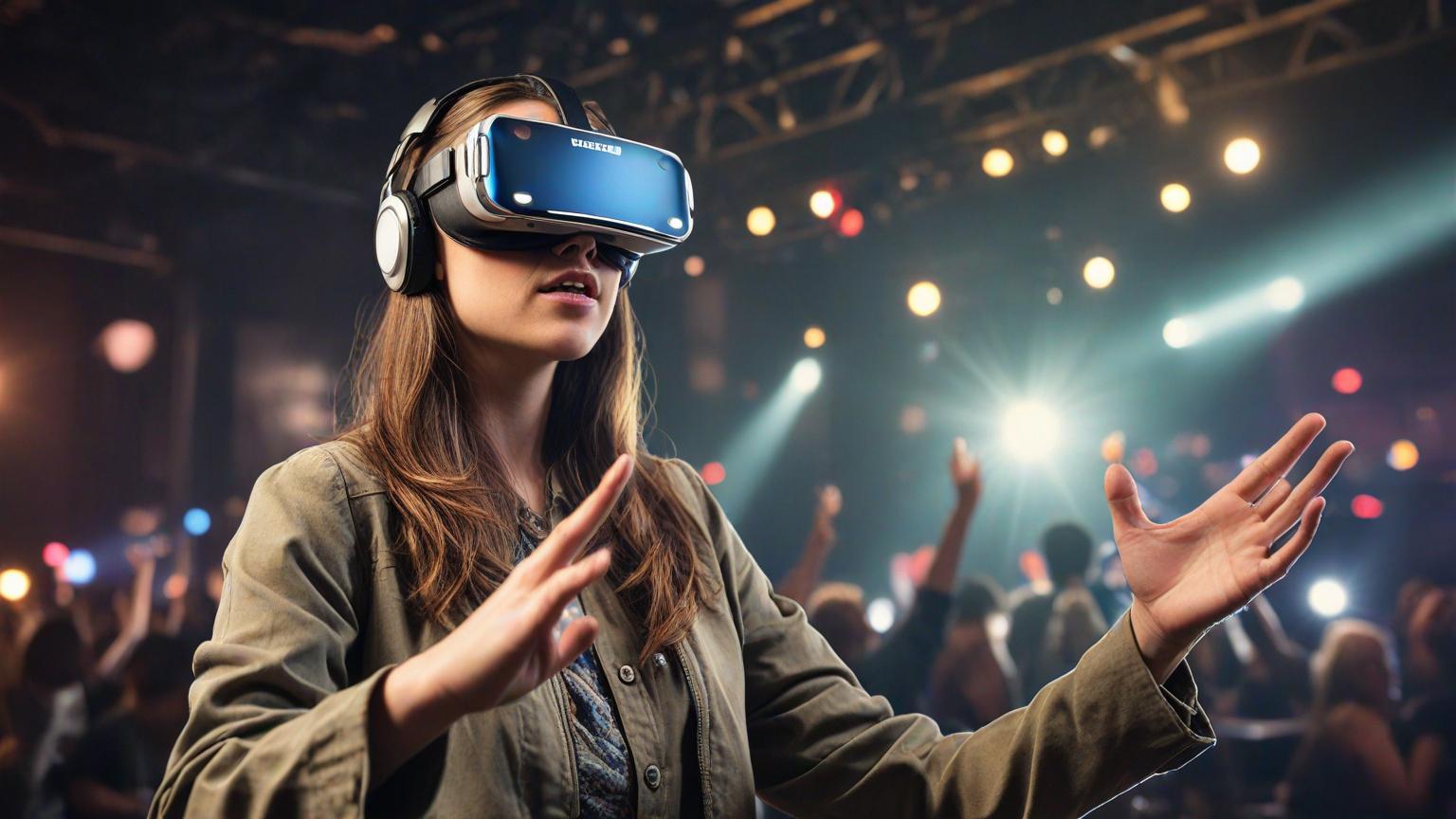In the wake of the digital revolution, an unexpected hero from science fiction has quietly begun to reshape the music industry: virtual reality (VR). While digital streaming has long been considered the paradigm shift in how we consume music, VR is now challenging that narrative by reimagining live performances entirely. In this world where time is a luxury, VR offers music fans an immersive experience that rivals the real deal, and it's captivating both artists and audiences across the globe.
For years, the allure of the live concert experience seemed irreplaceable—an amalgamation of sound, crowd energy, and shared moments that transport you beyond the ordinary. Enter virtual reality. What started as an experimental venture during the pandemic, when physical gatherings were banished, has now blossomed into a cutting-edge industry trend with companies investing both technology and creativity to bring the magic of live gigs to one's personal headset.
Let's set the scene: You put on your VR headset, and suddenly you find yourself amid thousands of other digital attendees, yet you feel the intimacy of a private concert. The sound is crisp; the visuals are astounding. Elements such as 360-degree cameras and spatial audio come into play, crafting an experience that's almost indistinguishable from being there in the flesh.
Indeed, what makes VR concerts exciting isn't just the replication of reality but the opportunity for transcendence beyond it. Imagine attending a music festival from the comfort of your home, one moment moshing in a chaotic crowd, the next, floating above it all, achieving an unprecedented level of emersion. With virtual avatars, custom backgrounds, and dynamic graphics feeding the experience, attendees become co-creators in a way never before possible.
Because of this technology, proprietary platforms like Oculus Venues and Wave are actively collaborating with artists to transition this medium from temporary workaround to long-term phenomenon. Global superstars such as Travis Scott, BTS, and Eminem have experimented with various forms of VR performances, pushing the boundaries of how concerts are perceived.
Moreover, the environmental benefits of VR concerts cannot be overlooked. As the threat of climate change looms ever larger, reducing the need for travel, stage setups, and accommodation significantly reduces carbon footprints. Artists and fans are savvier than ever about their ecological impact, and VR offers a sustainable alternative without sacrificing the atmosphere of live shows.
However, decoding VR concerts' potential doesn't solely rest in its grand visuals or crowd simulation. VR platforms are diving deeper, transforming how artists and fans interact, opening the door for unprecedented personalization and customization in setlists, venue styles, and fan engagement.
One of the major societal shifts catalyzed by VR music events is democratization. No longer do geographical or financial barriers dictate who can attend a specific show. A fan from Tokyo can virtually meet a fan from New York, sharing the exhilaration of the same performance, thereby unifying global communities like never before.
As a burgeoning industry, hurdles naturally exist. High costs of equipment, technological restrictions, and quality control are challenges that need resolution. Still, innovation strides mark a promising path, attracting hefty investments into the infrastructure necessary to support seamless and captivating experiences.
Critics have voiced concerns about traditional concert experiences becoming an endangered species. They argue that nothing replaces the raw energy of a musician in front of their crowd. Yet proponents of VR insist it’s not about replacement, but rather an expansion of options—convening physical and digital realities, creating an ecosystem wherein every concert has the potential to live on indefinitely.
Even as the music industry grapples with streaming royalties and revenue models, VR opens fresh avenues for monetization. Subscription models, pay-per-view ticketing, and virtual merchandise sit waiting on the shelf, ready to supplement artists' incomes in meaningful ways.
Indeed, through the brilliant lens of innovation, virtual reality holds the compelling potential for artists to reach deeper into their creativity, presenting their work in ways constrained only by imagination—VR concerts are just the tip of a transformative iceberg.
In conclusion, we find ourselves at the dawn of the live performance renaissance. Virtual reality, a tool once reserved for gamers and tech enthusiasts, is now an unmissable player in the grand concert narrative, setting the stage for the future while preserving the soul of the music we cherish. As VR technology continues to refine and evolve, it promises to enrich our connection to art and each other, forging a path from the present into a thrilling, immersive tomorrow.
inside the live performance renaissance: how virtual reality is transforming concerts

